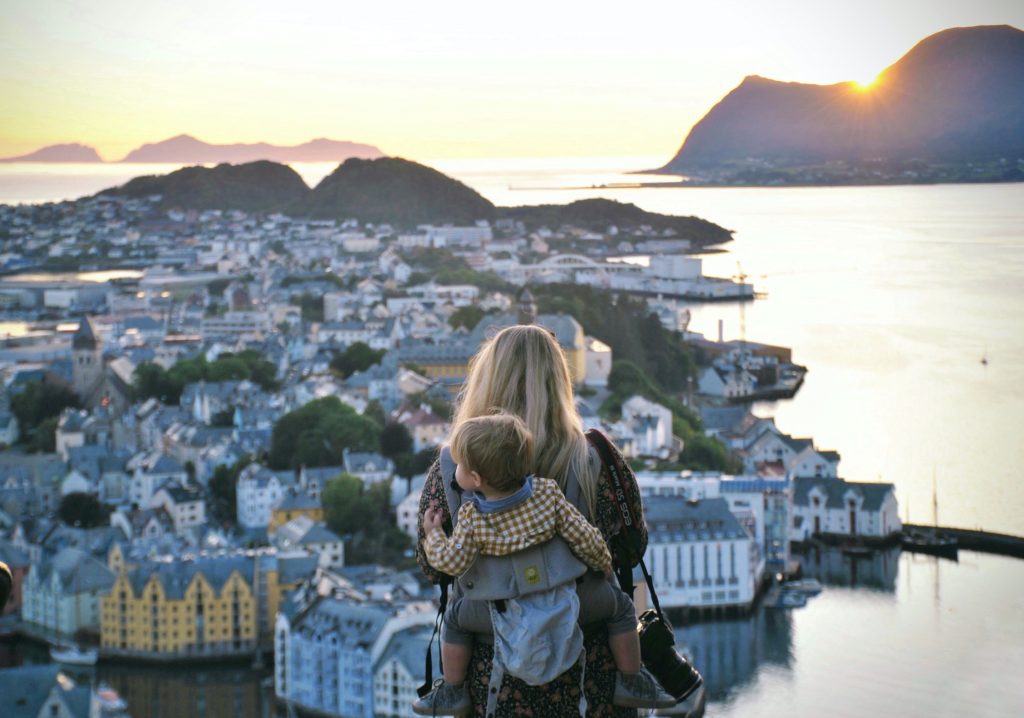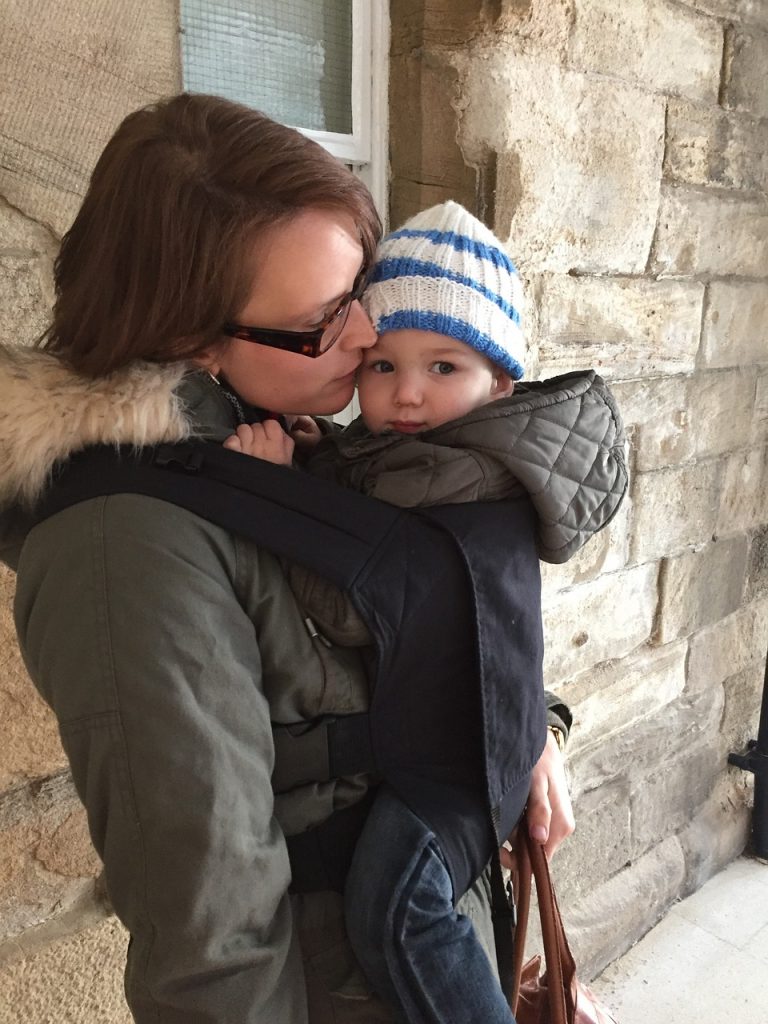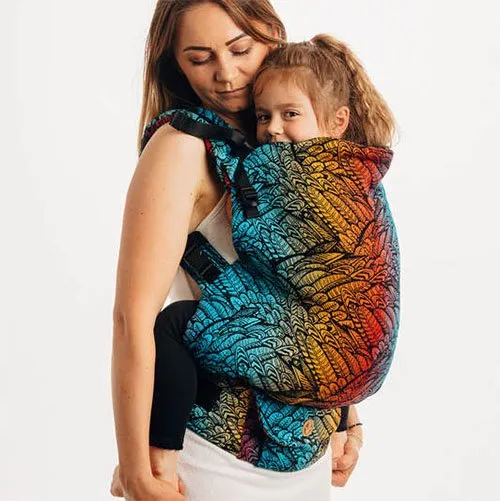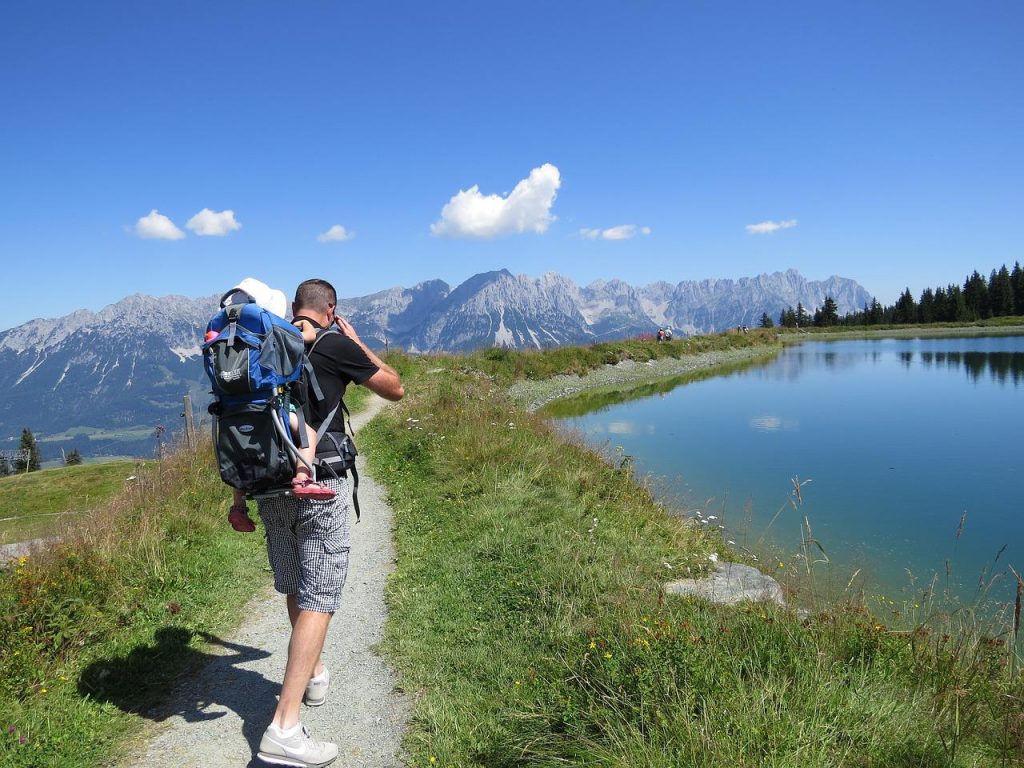Baby and toddler carriers are a great way for all parents to develop a bond with their child. But for children who were removed from their birth family at an early age, they’re a brilliant way to help build trust with their new carers.
James Prescott stated that “the single most important child rearing practice ….. for the development of emotional and socially healthy infants and children is to carry the infant on the body of the care giver all day long”.
Read on to find out why baby carrying is such a great option to help adopted children build their trust and attachment to their new carers. There’s also some recommendations for the different types of carriers, and some of the places you can buy or hire them from.
Expert opinion
Dr Rosie Knowles, a GP and mum of two, explains why using a sling for children who’ve experienced early life trauma and have been removed from their birth family, is so important in building strong and lasting attachments:
“Adoptive and foster parents will know that their children need all the love they can give; and a sling can play an useful part in building these bridges amidst the turmoil.
“The biochemistry of creating a secure attachment is not a conscious process, or one that depends on ancestry; the release of oxytocin and the down-regulation of the stress response that happens with consistent, close and loving contact happens in the background.”

Dr Knowles is a passionate advocate of building secure attachment relationships between children and their carers, and believes carrying, whether it’s newborn babies or older children, plays a big part in nurturing and building a bond.
You can find lots of helpful information about baby wearing and carrying children on her website Carrying Matters from the types of carriers and slings available, to the best carriers to use and how to use them.
Her website also has some really helpful video and photo tutorials to show you how to safely carry your child, as well as a directory of sling and carrier support. Through her training and education, she empowers carers to keep their children close in a safe and positive way.
The benefits of carrying children
Sue, a foster carer, explained to Dr Knowles the practical ways she’s found carrying the children in her care has helped them develop attachments:
“Many of the babies who we care for have been exposed to either drugs, alcohol or domestic violence whilst in the womb. Carrying them has, without doubt, enabled them to develop into calm, sociable, happy, securely attached babies who meet (and often exceed) their developmental milestones.
“Babies who have been neglected for the first few months of life can be very wary of people and situations. By carrying them they learn more about the world from a position of safety. They take cues from watching our faces and learn to trust people and situations more more quickly.
“Using carriers when introducing babies to their adoptive parents show the babies that this is someone to be trusted. Only I carry the baby in a sling whilst they stay with me although many other people hold them.
“However from the first day of introductions the adoptive mother wears the baby in my (the baby’s) sling. I believe this shows the baby that Mummy (or Daddy) is a special person which enables the attachment to switch between us.”
If you want to read more about the science behind how slings and carriers help adoptive families build attachments, this blog from Slings and More is a great place to start.
Types of baby and toddler carriers
Baby wearing options have increased massively in recent years. They’re suitable for all age ranges from small children up to bigger kids. There’s everything from ring slings to baby wrap carriers, front or backpack carriers, stretchy wraps, soft structured carriers and hip seats.
They come in different sizes and shapes, and fit all body types. They’re ergonomically designed to give lumbar support and can be worn in different positions with adjustable straps and waist belt, meaning there’s something that meets your individual needs and those of your child.

Adoptive parents recommendations
Choosing a sling or carrier that suits you is definitely trial and error and will depend on your needs and those of your child. Here are some recommendations from adoptive parents who’ve used the following carriers:
Kinderkraft Baby Carrier NINO Suitable for children from 3 months to 20 kg. Supported by the International Hip Dysplasia Institute with adjustable fastenings to ensure the perfect fit. Easy to put on and folds to a small size.
Beco Toddler Carrier Suitable from early toddlerhood to energetic kids up to around 60 lbs. Made from moisture-wicking microfibre fabric and a breathable 3D mesh with two carrying positions.
Hippychick hip seat Perfect for carrying children between 6 – 36 months. It’s tough, hardwearing and can go in the washing machine. Specifically designed to address one of the root causes of adult back pain, it provides a firm shelf for your child to sit on, supporting their weight from underneath.
Ring slings Come in a variety of sizes and designs to suit all budgets. You adjust the sling to fit you, so fits all shapes and sizes. As your child grows, you adjust your ring sling carrier for the perfect fit.
Wear My Baby
Hannah Wallace is the owner of Wear My Baby, the UK’s specialist baby carrier shop and advice service. She and her team have worked with thousands of families over the last 10 years, including many adoptive families. Between them, they’ve carried their own babies for more than 100 years. Wear My Baby is based in London, but they offer video consultations as well as in-person appointments.
Hannah explains why carrying is just as beneficial for older children, as it is for babies:
“Toddlers and older children feel happy and settled in carriers, just like babies do. Your child will feel comforted by being close to you – it gets the oxytocin, the love and bonding hormone, flowing and is just amazing for building secure attachments between parents and their children. Plus, being carried is calming and reassuring even for toddlers when tired, teething, unwell or upset.
“It’s good for their cognitive and emotional development, too. Being in a comfortable carrier, your child can see the world around them and engage with you face to face – and snuggle into you if they want a rest.
“It’s also incredibly practical. You’ll have your hands free to make sandwiches, do the laundry, look after other children…the list is endless.
“Having a carrier is a lot easier than having to take a buggy out with you, in case their little legs get tired. Just because your child can walk, doesn’t mean they will walk at the speed, duration or direction you want them to!”
Recommended toddler carriers
Here are some of Hannah’s top recommendations for the best toddler carriers:
The Lenny Lamb Preschool Carrier is the most adjustable and adaptable carrier. It’s comfy for ALL parents and suitable from 15 months to at least seven years, with an impressive upper weight limit of 30kg (66lbs).

The Tula Preschool Carrier has a clean and simple design and an upper limit of 32kg (70lbs). Some tall three year olds will be comfy in here, but I’d really recommend this for children who are in aged 4-5 clothes. For toddlers aged 2-4 years the Tula Toddler Carrier is awesome.
The Easy Feel Extend Plus is a generously padded carrier, ideal from two years (though you can cinch it down to use from 18months) to seven years+ with a weight limit of 29kg (54lbs).
The organic cotton Manduca XT (from £149) is superb and suitable from one month to roughly three years (max weight 44lbs/20kg), so ideal if you want to carry both a baby and an older child.
The Cococho is great from your baby’s first months to around three years. If you’re looking to easily back carry a big baby or toddler for long walks, this is my favourite alternative to a huge, framed back carrier.
Sling library
Getting something that suits you and your child is a learning curve and it might take a few attempts before you find something that is right. So, if you want a versatile carrier, but don’t want to buy, sling libraries are also a good option.
With a library, you book an appointment for a consultation which will explore the different carry positions and types of slings and carriers, until you find one that is the best choice for you and your child. To find if you’ve got a local sling library, just search in Google. If you’re North East based, the North East Sling library is a great place to start.

If you’d like to read more articles about parenting adopted children, click here. If you’ve enjoyed reading this article and found it helpful, why not buy me a coffee? Click here to show your support for the magazine which will always be free to read.



